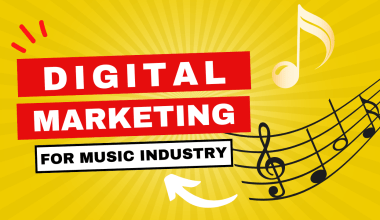In today’s digital era, independent artists and creators have more opportunities than ever to showcase their talent and make money from their work. Platforms like iTunes have leveled the playing field, enabling individuals to monetize their videos and music without the backing of a traditional record label. If you’re wondering how to monetize your video on iTunes without a label, this blog will provide you with everything you need to know, in a simple and approachable way.
What Does It Mean to Monetize Your Video on iTunes?
Monetizing your video on iTunes essentially means making your content available for purchase or rental, allowing you to earn revenue every time someone buys or rents it. This option was once reserved for creators under big labels or companies, but today, independent artists can use digital distributors to upload their videos, set pricing, and reach global audiences.
Why Choose iTunes?
Apple’s iTunes platform is one of the most trusted and widely used platforms for digital content. With millions of users worldwide, it offers incredible exposure for your work. Here are a few reasons why you should consider iTunes:
- Global Reach: Your videos can be accessed by an international audience.
- Flexible Pricing: You get control over how much your content costs.
- Revenue Potential: Unlike ad-based platforms, you earn money directly from purchases or rentals.
Can You Really Do It Without a Label?
Absolutely! Thanks to advancements in technology, independent artists and filmmakers no longer need to rely on traditional labels. By using digital distribution services, you can upload your content directly to iTunes, manage rights, and earn royalties. The process requires some effort, but it’s entirely possible with the right guidance.
Step-by-Step Guide to Monetizing Your Video on iTunes
1. Create High-Quality Content
First and foremost, your video must meet professional standards. iTunes has strict quality requirements, and your content must be visually and audibly appealing to attract an audience. Here are a few tips to ensure your video stands out:
- Invest in good equipment: Use a high-resolution camera and professional-grade audio recording tools.
- Edit thoroughly: Ensure that the video is polished, with no technical glitches.
- Add subtitles: Subtitles make your content accessible to a broader audience.
2. Choose a Reliable Aggregator
Since iTunes does not allow direct uploads from independent creators, you’ll need to use an Apple-approved aggregator. Aggregators act as intermediaries, helping you upload your video, meet Apple’s technical requirements, and manage metadata. Some popular aggregators include:
- Deliver My Tune
- CD Baby
- DistroKid
- Repost by SoundCloud
Each aggregator has its own pricing and features, so choose one that aligns with your needs and budget.
3. Prepare Your Video for Upload
Before uploading, your video needs to be formatted according to iTunes’ specifications. Most aggregators will guide you through this, but here’s an overview of what to expect:
- Resolution: Ensure your video is at least 1080p.
- File Format: iTunes accepts .MOV or .MP4 formats.
- Metadata: Add an engaging title, description, and keywords.
4. Set Your Pricing Strategy
Monetizing your video on iTunes means deciding how much your content will cost. You can choose between the following options:
- Purchase: Viewers pay a one-time fee to own the video.
- Rental: Viewers pay a smaller fee for temporary access.
Consider your target audience and market trends when setting your prices.
5. Promote Your Video Aggressively
Simply uploading your video to iTunes isn’t enough. You need a strong promotional strategy to ensure it reaches the right audience. Here’s how to spread the word:
- Leverage Social Media: Use platforms like Instagram, Twitter, and TikTok to showcase snippets of your video.
- Collaborate with Influencers: Partner with influencers in your niche to create buzz.
- Run Ads: Invest in paid ads to increase visibility.
- Email Marketing: Reach out to your mailing list with updates and promotions.
6. Track Performance and Optimize
Once your video is live on iTunes, keep an eye on its performance. Aggregators often provide analytics tools to track sales, rentals, and audience demographics. Use this data to:
- Identify what’s working.
- Adjust your marketing strategy.
- Plan for future releases.
Benefits of Monetizing Without a Label
By monetizing your video on iTunes without a label, you enjoy complete creative and financial control. Here are some key benefits:
- Higher Revenue: No label means no sharing of profits.
- Creative Freedom: You decide what content to create and how to present it.
- Direct Engagement: Build a loyal audience by connecting with them personally.
Common Challenges and How to Overcome Them
While the process is straightforward, you may encounter some hurdles:
- Technical Requirements: iTunes has strict specifications, so make sure your content meets them.
- Marketing: Without a label’s resources, promoting your video can be challenging. Invest time in learning digital marketing strategies.
- Costs: Aggregators charge fees for their services. Factor this into your budget.
Tips to Maximize Earnings
- Release Bonus Content: Offer behind-the-scenes clips or interviews to entice viewers.
- Engage Your Audience: Respond to comments and reviews to build rapport.
- Stay Consistent: Regularly release new content to keep your audience engaged.
Conclusion
Monetizing your video on iTunes without a label is not only possible but also incredibly empowering. With the right tools, strategy, and dedication, you can showcase your work to a global audience and earn revenue directly. Whether you’re a filmmaker, musician, or content creator, iTunes offers a fantastic platform to share your talent and get paid for it.
So, take that leap today. Start creating, find the right aggregator, and share your video with the world. Remember, the journey to monetizing your video on iTunes without a label begins with one bold step.
For further reading, explore these related articles:
- The Top Triller Global Chart: Everything You Need to Know About This Viral Music Trend
- How Billboard Vote is Changing Music Forever
For additional resources on music marketing and distribution, visit Deliver My Tune.






